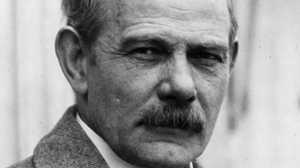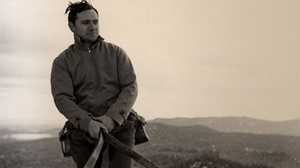Coolidge and the Summer White House

The first time Calvin Coolidge met Gutzon Borglum, the president agreed to the artist's scheme to mint commemorative coins. With the coins, Borglum hoped to raise funds to carve a mountain into sculpture. Although the Stone Mountain coins were minted, Borglum never completed the project.
More than 20 years later and towards the end of his life, on hearing the name of the artist again, it is said that Coolidge asked a visitor, "About how far would y'say 'tis from here to the Black Hills?"
"Oh, I don't know, Mr. President," was the reply. "I'd guess maybe fifteen hundred miles."
"Well, y'know ... that's about as close to Mr. Borglum as I care to be."
In 1927, when President Coolidge announced that he wanted a summer away from bugs, crowds, a scheduled White House renovation, and the bad Washington, D.C. air that irritated his bronchitis, South Dakotans worked hard to get him to spend his vacation in the Black Hills. Their entreaties were heard, and Calvin and Grace Coolidge arrived in Rapid City on June 13th.
South Dakota was everything the Coolidges were hoping for, and they fit comfortably into their summer White House, attending a local church and going out visiting in their low-key manner. The South Dakotans were elated to have such important guests and presented them with a horse, a large-brimmed Western hat, and boots as gifts. The president adopted the hat and boots as his local costume.
While Grace Coolidge knit on the porch of the Game Lodge, Calvin spent some time trout fishing. He was spectacularly successful at the activity, even though he had never tried it before this trip. It was more than beginner's luck, however. To make sure the president enjoyed his stay, the creek had been stocked by local boosters with big fat fish from a local hatchery. Whether or not the fishing helped, the president extended his visit from three weeks to three months.
Although Coolidge tried valiantly to limit his public appearances during his summer vacation, Gutzon Borglum campaigned hard to get the president to dedicate the Mount Rushmore site. When the day came, August 10, 1927, Coolidge made a speech that read in part:
"We have come here to dedicate a cornerstone laid by the hand of the Almighty. ...The union of these four presidents carved on the face of the everlasting Black Hills of South Dakota ... will be distinctly American in its conception, in its magnitude, in its meaning. ... No one can look upon it without realizing it is a picture of hope fulfilled.
"Its location will be significant. Here in the heart of the continent, on the side of a mountain which probably no white man had ever beheld in the days of Washington, in territory acquired by the action of Jefferson, which remained an unbroken wilderness beyond the days of Lincoln, which was especially loved by Roosevelt."
He then presented Borglum with six steel drill bits with which the artist would start carving the hill. Borglum, in response, invited Coolidge to write the explanatory inscription Borglum envisioned for an Entablature to accompany the portraits on Rushmore.
Coolidge's goodwill was helpful in the effort to raise funds for the monument; he signed the first large appropriation bill for the project just days before the end of his presidency. As an ex-president, he remained on decent terms with Borglum until the affair of the Entablature turned into a fiasco. After the unwanted publicity, Coolidge didn't want anything to do with the artist again.







